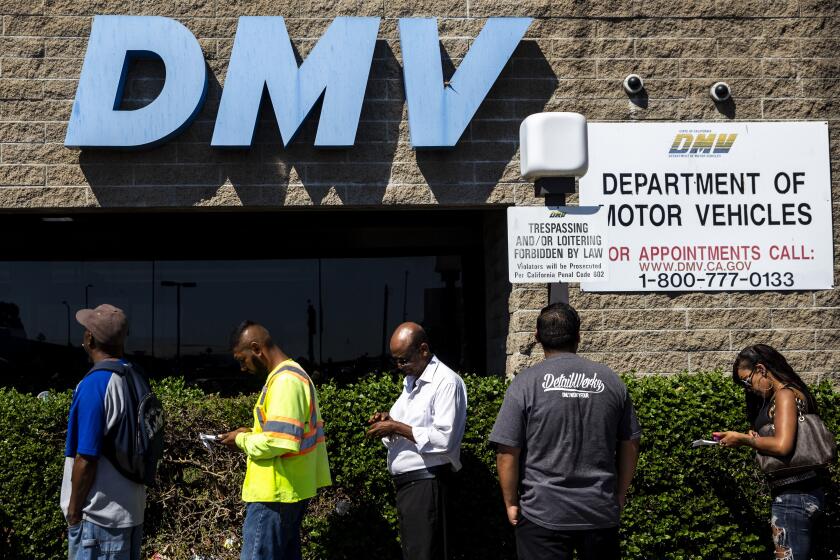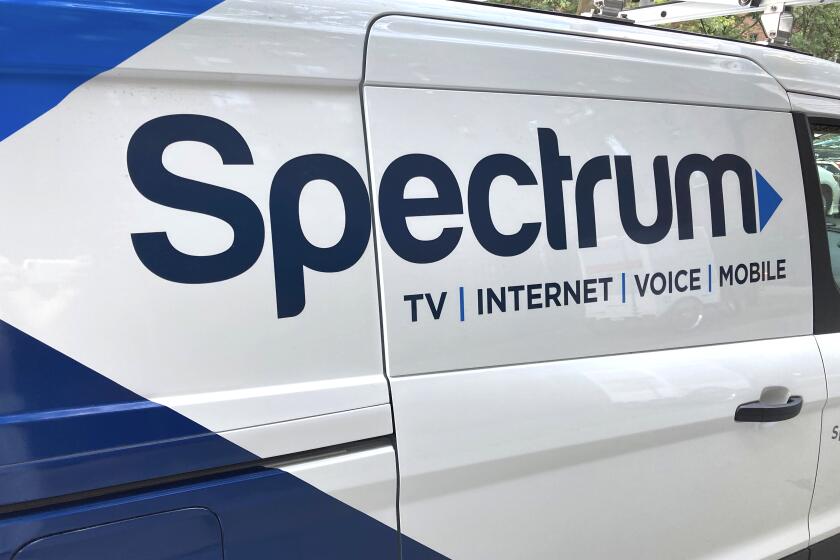No retirement plan at work? Your boss may have to sign up for CalSavers soon. Here’s what to know

If you work for a small business in California, time is running out for your employer to set up a retirement savings plan.
By June 30, all businesses and nonprofits with five or more employees in the state must either offer their adult workers a “qualified” retirement plan (such as a pension with defined benefits or a 401[k] plan) or sign up for the state-run CalSavers Retirement Savings Program. CalSavers offers workers individual retirement accounts at no charge to their employers.
Larger companies already have to comply with the mandate, and the state has begun penalizing the ones that don’t. Employers with 50 or fewer workers in California are the last group to face the requirement to offer retirement benefits or sign up for CalSavers.
There are a growing number of 401(k)s, auto-enrollment IRAs and other qualified retirement plans designed for small businesses, but the vast majority of these employers do not offer one. Almost half of the people working in the private sector in the U.S. are employed by small businesses, according to the Small Business Administration. And of that group, only a thin slice — about 10% — have a retirement savings plan at work, said Kristen Carlisle, a general manager of the financial services firm Betterment.
Yes, you can set up an IRA without the help of your employer. But too few people do, and as a result, most families have little or no retirement savings, according to the Economic Policy Institute. The situation, said Jeff Schulte of ForUsAll, is “a crisis of epic proportions.”
A UC Berkeley analysis of census data in 2019 found that about 60% of California workers ages 24 to 64 had no retirement benefits at work, and nearly half of Californians had no assets dedicated for retirement.
When it comes to retirement plans, “purely voluntary systems inevitably have poor outcomes,” said Nari Rhee, director of the retirement security program at the UC Berkeley Labor Center. “There’s a consensus in behavioral economics that people need some kind of strong nudge to get them to do the right thing.”
That’s why state lawmakers decided a decade ago to require employers to offer a retirement plan, with CalSavers as a default option that automatically enrolls workers and starts building their nest eggs. Here’s a rundown of CalSavers and the other options available to small businesses and their employees.
California law requires all but the smallest employers to offer workers some kind of retirement savings plan. Here are the requirements and options.
What if my workplace doesn’t offer a retirement plan?
One hurdle CalSavers faces, Rhee said, is making small employers aware of the June 30 deadline. They need to be told what their obligations are, she said, but they’re the hardest group to reach.
“It’s a big marketing challenge,” Rhee added. “This is where the enforcement piece comes in.”
Workers can help on this front too. If your employer doesn’t offer retirement benefits, let it know about the deadline — you can point your boss to information posted online by state Treasurer Fiona Ma or by any number of employment law experts.
You might also make the argument that a retirement plan can help recruit and retain workers at a time when businesses are struggling to fill open positions. And then there are the penalties for not complying with the mandate: $250 per eligible employee for the initial violation, and an additional $500 per employee if noncompliance continues.
Katie Selenski, executive director of CalSavers, said the program contacts employers that miss the deadline to try to get them into compliance. If after several months an employer still doesn’t offer a plan, she said, the board will start imposing penalties.
If your employer doesn’t offer retirement benefits, you can sign up for CalSavers directly and have contributions sent from your bank account to your IRA, or ask your boss to withhold the money and send it to CalSavers for you, she said. You can also sign up for CalSavers if your employer has a 401(k) or pension plan that isn’t available to you because you work a limited number of hours. In either case, though, you’ll need to be at least 18 years old and have a Social Security or taxpayer identification number.
States are slowly rolling out digital driver’s licenses, aiming to give residents more control over their identifying information. California is heading that way too.
What is CalSavers?
CalSavers offers the simplest solution for an employer trying to comply with the mandate: a payroll deduction IRA that enrolls workers automatically unless they explicitly opt out. It takes minutes to register online, and CalSavers charges employers nothing to participate. Nor do employers contribute anything to their workers’ accounts.
Each worker who doesn’t opt out decides how much to squirrel away, with the default set at 5% of gross pay. The program also increases each worker’s contribution rate by 1 percentage point every Jan. 1 until it hits 8% of gross pay. But workers can change how much they contribute to their IRA or turn off the automatic increase at any point.
You can have multiple IRAs, but the most you can contribute to all of them is $6,000 a year (or $7,000 if you’re 50 or older). So far, the contribution cap hasn’t been an issue for the typical CalSavers enrollee; the average contribution is $170 per month, or $2,040 a year.
Employees get to choose which of five low-cost mutual funds to invest in, each with a different investment strategy (and they can choose more than one). By default, their money will go into a “target date” fund that gradually reduces volatility and risk as the worker approaches the year he or she plans to retire.
As with any retirement plan, workers have to pay the fees charged by the fund managers. But in CalSavers, enrollees also have to cover the program’s administrative costs. Together, those fees and costs add up to a little under 1% of the IRA’s balance — or to be precise, $8.25 to $9.50 per $1,000 invested.
That overhead, which slows the growth of workers’ savings, is about the same as or less than the percentage taken by 401(k) providers on accounts at small businesses, Selenski said. And CalSavers’ percentage will drop over time as more workers enroll and the total amount saved grows, she said.
The only burdens on employers who participate are the requirements to keep CalSavers updated on their roster of employees, to withhold their employees’ IRA contributions from their pay and to send that money promptly to CalSavers. They may delegate these duties to the company that handles their payroll, CalSavers says.
Workers can easily take their IRAs with them if they change jobs. A second key feature of the CalSavers accounts is that they are Roth IRAs, meaning that contributions aren’t tax deductible now but withdrawals are tax free in retirement. Employees can make withdrawals earlier without a tax penalty as long as they touch only the money they contributed, not what their IRA earned from dividends and capital gains.
As of Monday, nearly 56,000 employers were participating in CalSavers, with two-thirds of their eligible employees starting accounts. That’s almost 262,000 workers.
Nevertheless, millions of California employees still don’t have access to a retirement plan at work.
Evictions and rent increases still are limited in Los Angeles and many other parts of Southern California. But the rules vary from city to city.
401(k)s, IRAs and other options
Rhee of UC Berkeley said CalSavers is a modest savings program largely because the federal government doesn’t allow states to mandate more ambitious employer-sponsored retirement plans. So unless it wanted to create its own version of Social Security, California was basically limited to offering an auto-enrollment IRA program, she said.
The financial services industry, meanwhile, offers about half a dozen different types of qualified retirement plans. For a good overview, see the IRS’s comparison of the main features of qualified plans. The U.S. Department of Labor also offers an interactive guide online to help employers figure out what plan might best suit their workforce.
Most of the other types of retirement plans can enable workers to build their savings faster with the help of contributions from their employers. But they tend to be more costly and complex for employers than CalSavers, and may carry some liability risks.
The most popular type of plan in the U.S. is a 401(k), which allows workers to save up to $20,500 (or $27,000 if they’re 50 or older) tax-free in 2022, although they’ll pay taxes on the money when they withdraw it in retirement. Employers can contribute up to 100% of the employee’s pay or $61,000 ($67,500 for workers 50 or older), whichever is lower, to an employee’s 401(k) in 2022.
According to a Congressional Research Service report last year, however, 401(k) plans are available to only about 4 in 10 lower-wage workers (those whose average wages are less than 75% of the rest of the country’s). And barely half of the companies with 50 or fewer workers offer 401(k)s.
Financial industry experts say the paperwork, compliance burdens and liability risks of 401(k) plans have deterred many small employers, as have the costs imposed by the major investment houses that have been supplying those plans. In recent years, though, technology-driven financial firms have designed more automated, lower-cost 401(k) plans aimed at small businesses.
These companies — including Ubiquity Retirement + Savings, Betterment, ForUsAll, Guideline and Vestwell — administer the accounts, provide a suite of investments for employees to choose among, and take on at least some of the liability risk.
The federal government is also giving small businesses more incentive to offer retirement benefits, enacting legislation in 2019 that increased the tax credits employers can claim for new retirement plans, said Chad Parks, founder and chief executive of Ubiquity Retirement + Savings. Now, small employers can write off half their plan expenses, up to $5,000 a year, for the first three years, Parks said, and they can claim an additional $500 credit if their plans enroll workers automatically.
The credit helps slash the administrative costs of the 401(k) plans offered by many of the new entrants. Although their models vary, they typically charge employers a flat fee per month plus a fee per worker enrolled, while collecting a small percentage of the amount saved in the worker’s account. That splits the cost between employer and worker without putting much of a drag on workers’ accounts.
With the tax credits, the fees for a 20-person company’s 401(k) plan could be $100 or less per month. That’s far less than what a company would spend if it decided to match its workers’ contributions to their 401(k)s.
The House overwhelmingly approved a bill in March to increase the tax credit for small employers to 100% of the first $5,000 in expenses for new plans. The proposal, which is awaiting action in the Senate, would also temporarily provide tax credits for the first $1,000 per employee a small employer contributes to workers’ retirement accounts.
Jeff Rosenberger, chief operating officer of Guideline, said employers shouldn’t start a 401(k) plan if they have extremely high employee turnover or if they’re not confident their business is going to last for more than a few years. They also need to consider whether their workers have the means and desire to contribute more than an IRA would allow.
Selenski of CalSavers said the median income of the California workers who don’t have a retirement plan today is estimated at less than $30,000. For these workers, hitting the maximum IRA contribution would be a stretch.
Yet “when people start to save on a payroll-deducted basis,” Vestwell Chief Executive Aaron Schumm said, “they are often able to save far more than we ever thought they would be able to.” A lot of people can increase their savings, he said, “when they see how easy it is, when they don’t have the dollars sitting in their bank account.”
Still, Rosenberger acknowledged that 401(k)s aren’t for every business. “There is a place for CalSavers; there is a place for us,” he added. “It’s a big enough challenge in the marketplace, and small businesses have been so underserved.”
Employers who aren’t interested in 401(k) plans but want an alternative to CalSavers have a number of other choices for IRA plans.
An automatic enrollment IRA similar to CalSavers’ plan is available from private financial service companies. And there are two additional types of IRA available from banks and investment firms that rely on employer contributions to boost workers’ accounts.
- A SIMPLE IRA plan, which a business with 100 or fewer employees can offer, requires employers to match their employees’ contributions or kick in 2% of each employee’s compensation.
- A simplified employee pension is funded entirely by employer contributions. Similar to SIMPLE IRA plans, the employer has to contribute at the same rate to all employees’ SEP IRAs, but the contribution limits are considerably higher — up to 25% of a worker’s pay, to a maximum of $61,000 in 2022.
One other option for employers is to offer a “defined benefit” pension, which pays workers a percentage of their salary after they retire based on how many years they’ve worked for the company. Only about a quarter of full-time private sector workers in the United States are covered by pensions, the Congressional Research Service reported. Those plans have faded over the last several decades because of the cost and risk they carry for employers, who have to pay the promised benefits regardless of the health of the pension fund’s investments.
Employers who are torn between a 401(k) and an IRA plan can always change their minds down the road. If they decide to switch from an IRA to a 401(k) plan or vice versa, their employees can choose to roll over their accounts into the new plan or start a second retirement account without incurring tax penalties.
The biggest internet service providers in California have all agreed to provide free broadband to low-income households. Now the challenge will be getting them to sign up.
About The Times Utility Journalism Team
This article is from The Times’ Utility Journalism Team. Our mission is to be essential to the lives of Southern Californians by publishing information that solves problems, answers questions and helps with decision making. We serve audiences in and around Los Angeles — including current Times subscribers and diverse communities that haven’t historically had their needs met by our coverage.
How can we be useful to you and your community? Email utility (at) latimes.com or one of our journalists: Jon Healey, Ada Tseng, Jessica Roy and Karen Garcia.
More to Read
Totally Worth It
Be your money's boss! Learn how to make a budget and take control of your finances with this eight-week newsletter course.
You may occasionally receive promotional content from the Los Angeles Times.















